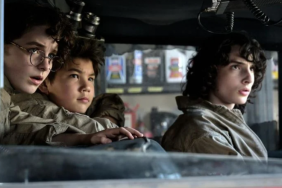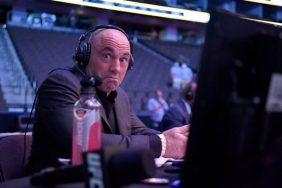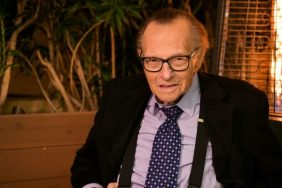A Venn diagram of Flying Lotus and Sylvia Plath, the short film FUCKKKYOUUU was inspired by the music of the former, clarified by the poetry of the latter. Written and directed by Eddie Alcazar after a Flying Lotus track conjured a stream of disjointed images in his head, the film is a psychedelic, surreal journey described thusly in press notes: “With the ability to travel in time, a lonely girl finds love and comfort by connecting with her past self… she struggles with her identity and gender, and as time folds onto itself only one [of her two selves] can remain.” The film makes its world premiere at the upcoming Sundance Film Festival.
Also: Art Doc of the Week | Janis Joplin: Little Girl Blue
Alcazar, who cites Kieslowski, John Hughes, Clive Barker, Alejandro González Iñárritu, Tarkovsky, Larry Clark, and Scorsese, as influences, recently sat with Crave and discussed his creative process, his relationship with Flying Lotus, and why he’s not that crazy about the press release description of his movie.
CraveOnline: You open the film with excerpts from Sylvia Plath’s poem “Elm,” which immediately puts the viewer in a very specific kind of feminine mind space. Was that the goal, and was “Elm” a poem you already had an affinity for, or did it come your way in the process of your writing or shooting the film?
Eddie Alcazar: In my films, I try to find and connect the highest point of relevant emotions. I randomly read poetry and [Plath’s] story and death got my attention. I felt “Elm” encompassed the fractured mindset that the lead character was experiencing. It was the last piece I added to the film. I wasn’t sure if it would be right since we essentially created a silent film which I felt had this universal language communicated with picture and sound. The poem, in a way, breaks that but in the end I decided to leave it in.

Still from FUCKKYOUU; courtesy Exist Films
What was the inspiration for the film?
Flylo played me a few tracks and one in particular struck images almost instantly. It was unconventional – mainly just screaming – but it had a strong intensity and atmosphere to it that I was able to clearly understand. I went home and couldn’t shake it from my head, so I started storyboarding some of the visions [I had.] The entire process was driven purely by emotions and symbolism. I tried to stay away from anything too literal.
The description of the film in the press notes gives it a more concrete meaning than the images themselves convey to the viewer who might watch it without knowing that it’s about time travel, meeting one’s self on that trip, and then deciding which of the two selves survives. As an experimental filmmaker, is giving that kind of information to the viewer a necessary evil to get bodies in the seats? I ask that because what you’re doing is challenging the way we see and process images and narrative in the first place, so explicitly spelling everything out almost seems in violation of what you do and why you do it in the first place.
I agree and I felt that the time travel element should always take a back seat to the emotional struggle in the film. Unfortunately there is a process where almost every festival or distribution outlet needs some sort of traditional synopsis or description. That’s quite difficult – how to fit all these meanings incorporated into the film in a couple sentences without reveling too much. But I guess it attracts viewers that gravitate to certain genres.
Did you already know Flying Lotus before making FUCKKKYOUUU?
Yes, we were introduced by a mutual friend who is helping on one of my features. Our first discussions revolved around that particular film and then we decided to get a better feel for how we both work. We grew the relationship by doing FUCKKKYOUUU – something a bit smaller in scale that would still express both of our voices.

Still from FUCKKYOUU; courtesy Exist Films
When you two were working on FUCKKKYOUUU, did you give him specific notes on what you wanted, or just let him watch the film and do what he was inspired to do?
We spoke about it a lot in the process of making it, and he gave me some temp music he created that I could play with. We had a couple of shoots so we had the breathing room to reflect on footage and incorporate more ideas as we pieced it together. He pretty much just ran with it once I gave him a rough cut. I wanted to see where his first instincts would take it. After that trust grew and we realized that we were naturally moving towards the same direction it was just a matter of tinkering with the material until it was finished. It was fairly minimal with notes. We connected in the right places on most of the score and then there were just technical sound details that were incorporated towards the end.
You directed the documentary Tapia [executive produced by 50 Cent for HBO] about World Champion boxer Johnny Tapia, and are also about to direct a feature film on him [Johnny.] What is the common denominator in your short experimental works and the documentary and feature films you’re working on now?
I want to be able to further explore the film medium and experiment with ideas that viewers can connect with emotionally and psychologically. My goal is to find rhythm on the largest scale possible.









